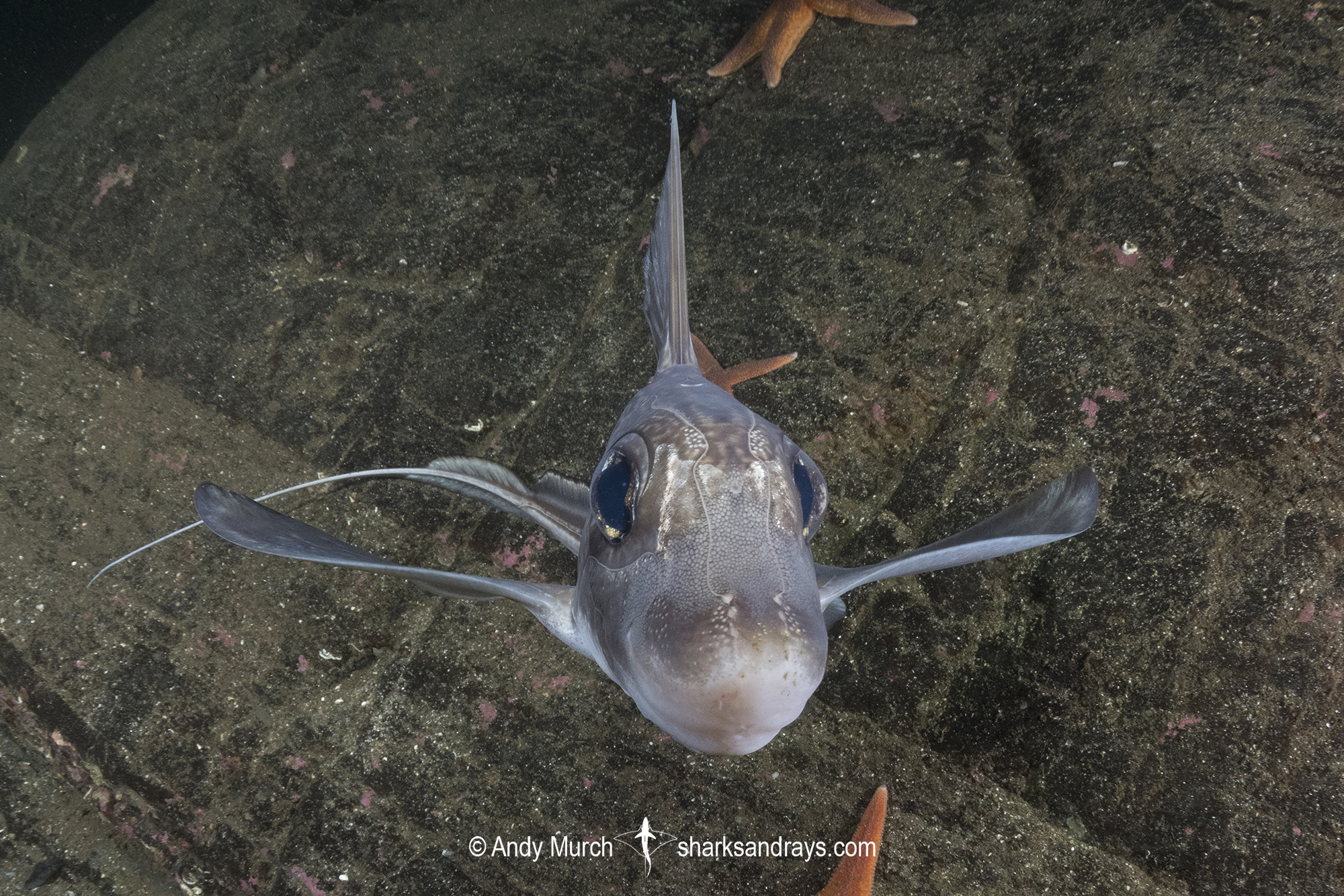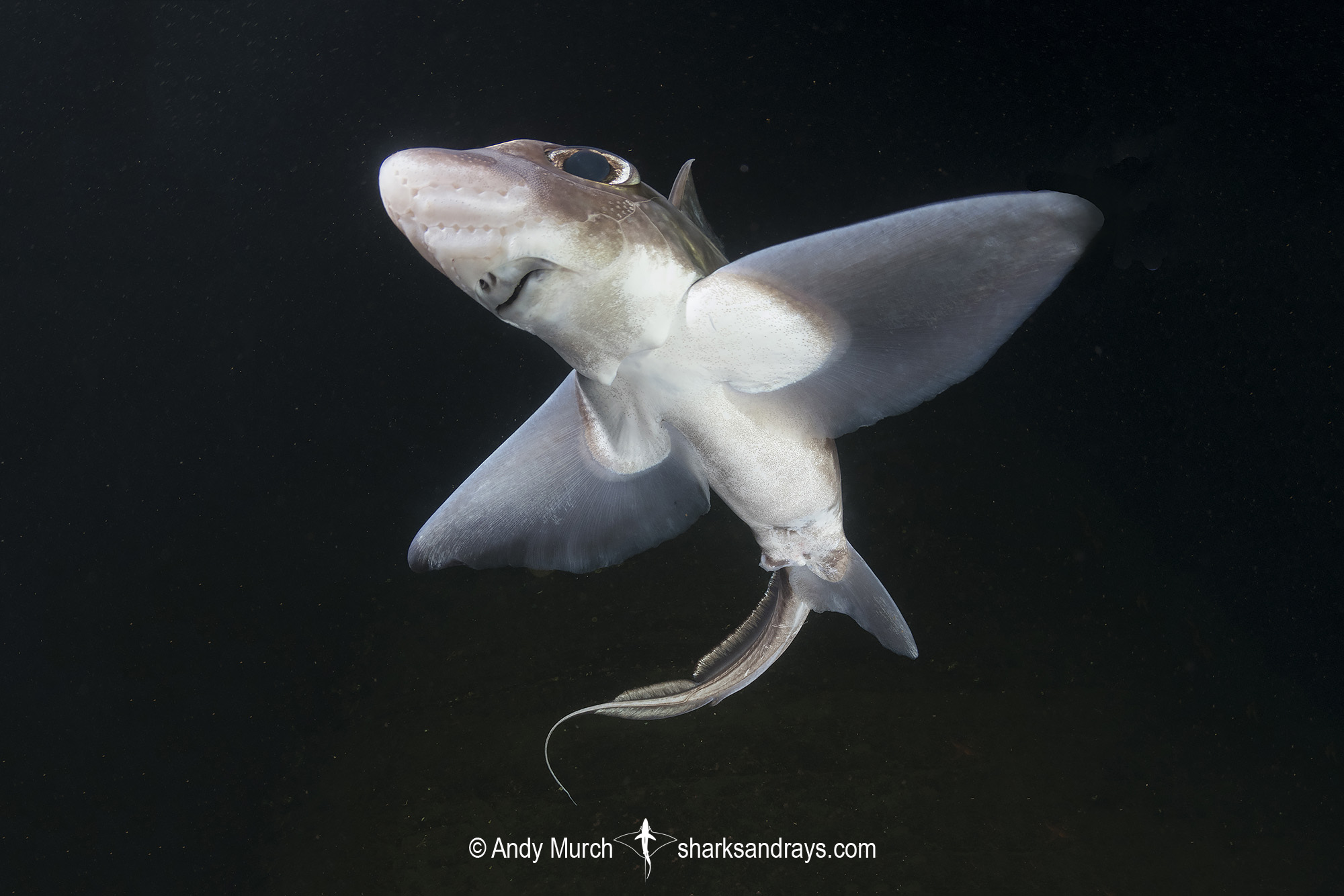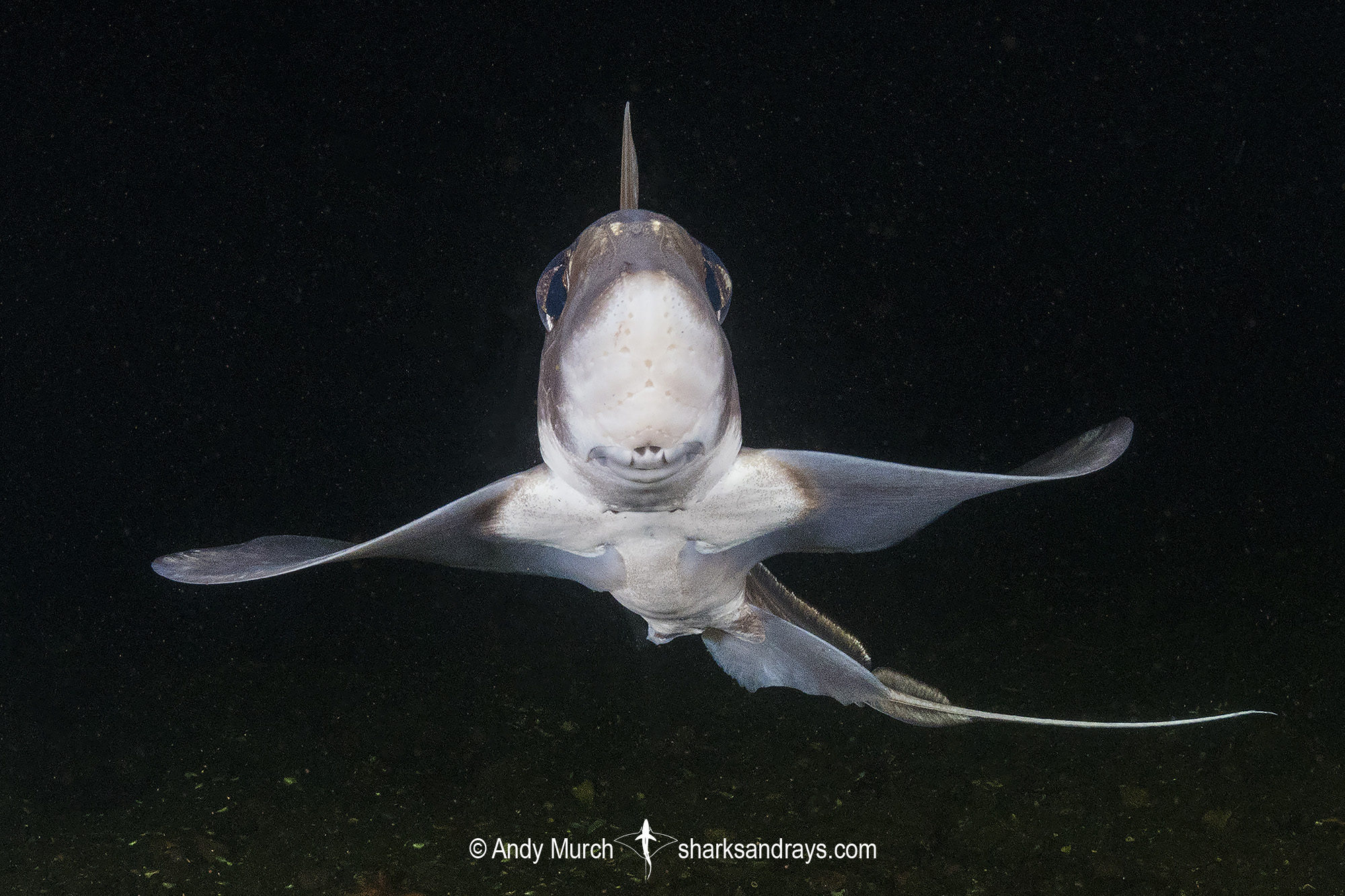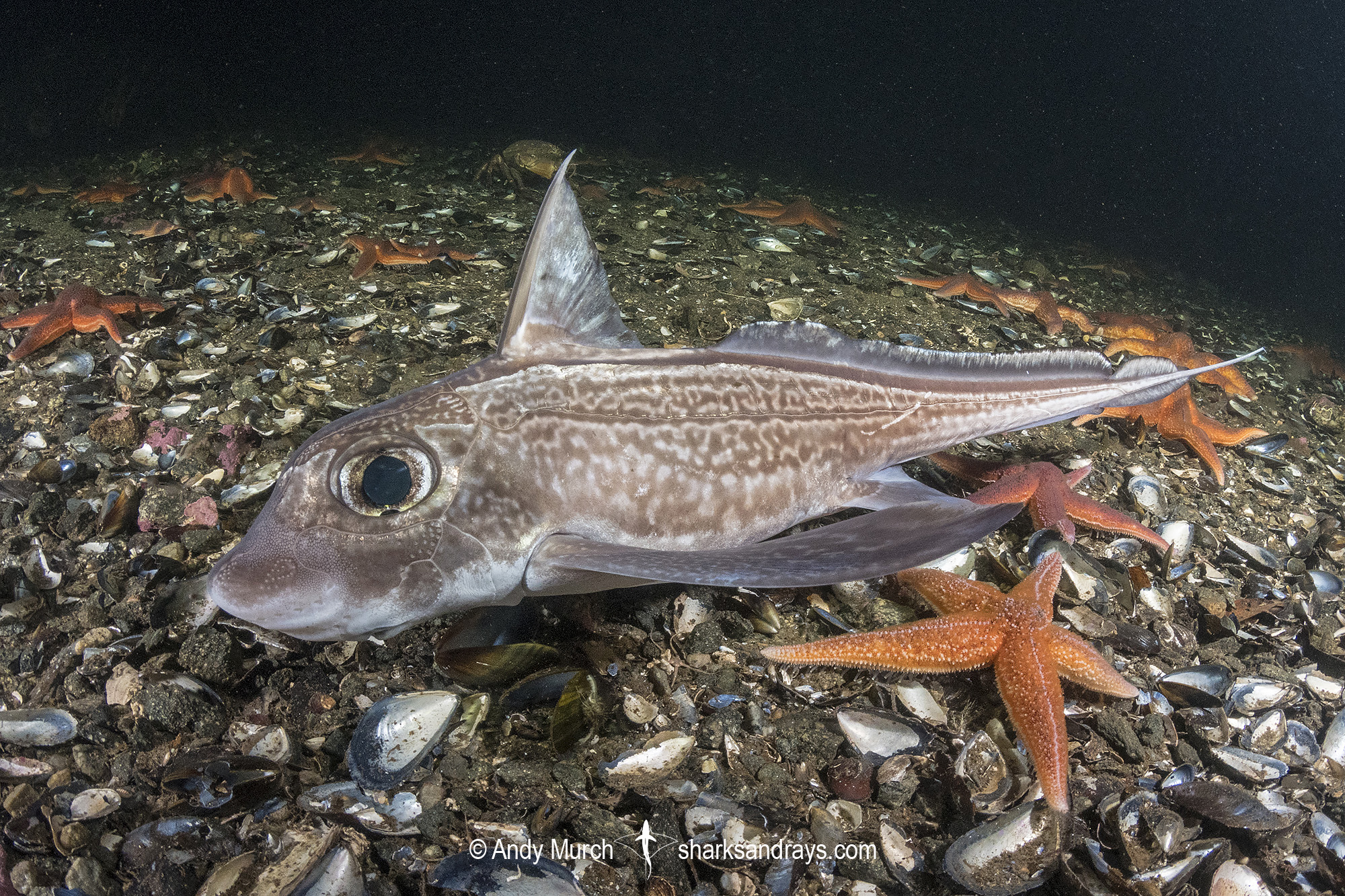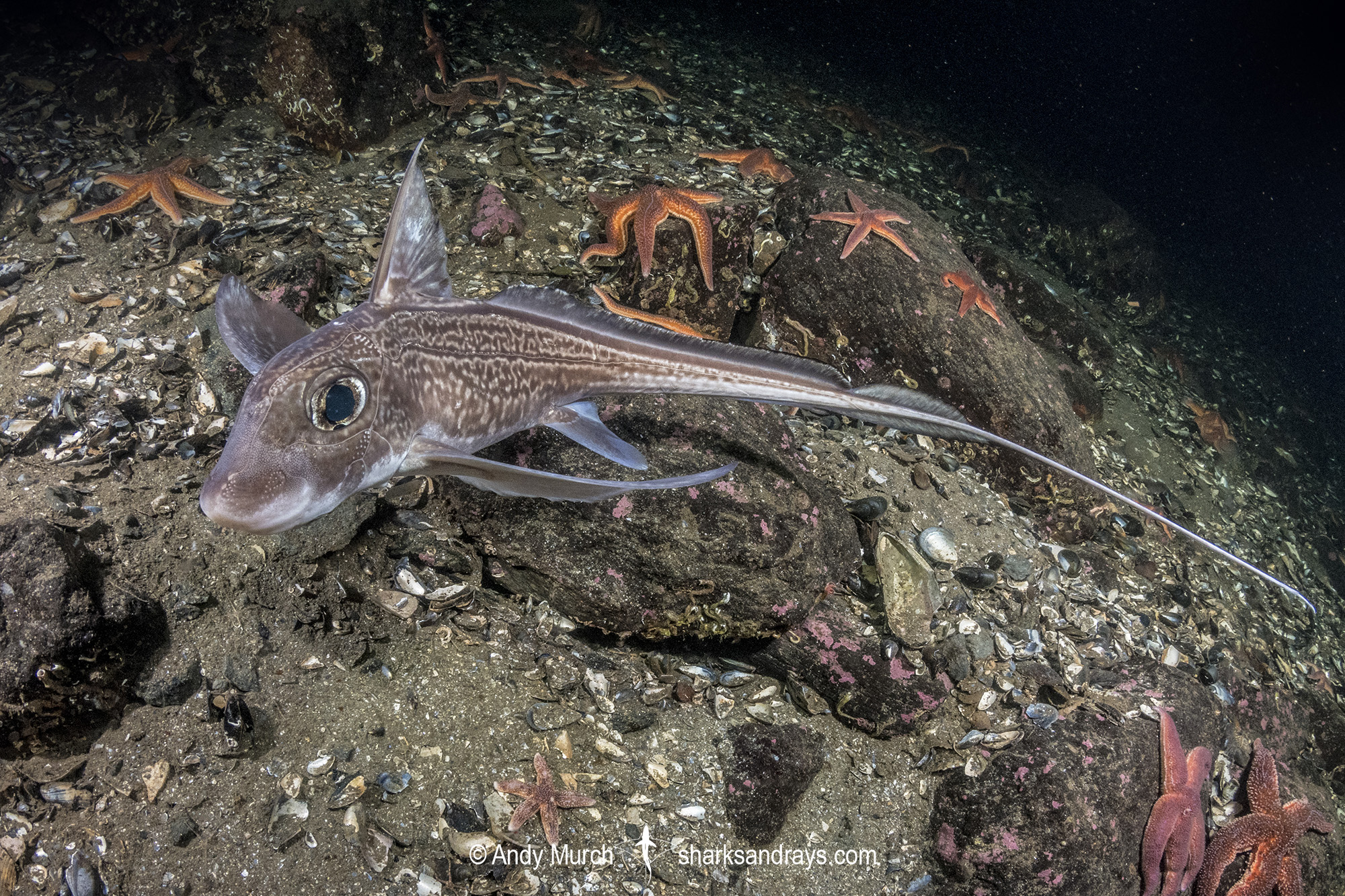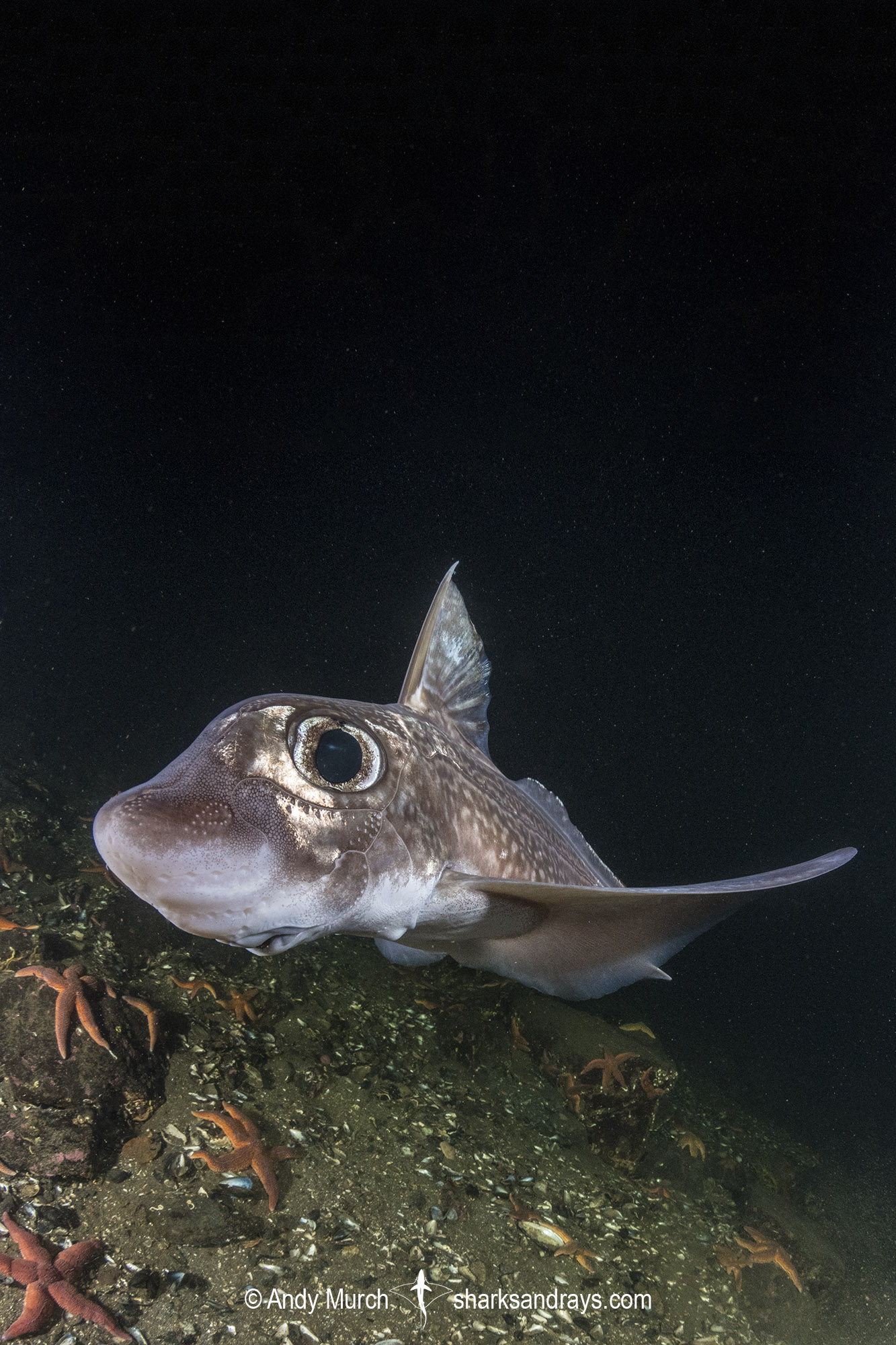Common names
Rabbit Fish, Rabbitfish, Rat Fish, Rattail.
Binomial
Chimaera Monstrosa.
Synonyms
Chimaera arctica, Chimaera argentea, Chimaera borealis, Chimaera cristata, Chimaera dubia, Chimaera mediterranea.
Identification
A large chimaera with a large bulbous head and tapering body. Snout broadly rounded. Frontal tentaculum (cephalic clasper) present on forehead of males. Eyes very large. mouth wide. Nostrils large, round, and close set.
Pectoral fins very large, triangular, with narrowly rounded apices. Pectoral fin base short, muscular and mobile, supporting thin flexible fins that are used for locomotion. Pelvic fins much smaller than pectorals. First dorsal fin tall and triangular, with prominent rays, and a thick, venomous anterior fin spine that can be raised perpendicularly to deter predators, or lowered when swimming. Curved tip of fin spine exposed; extending above dorsal margin. Second dorsal fin low, straight, and very long, somewhat thinner at mid-length. Anal fin extremely small and inconspicuous, positioned close to caudal. Caudal fins low, long, and rounded. When intact, caudal fin terminates in a very long thin filament; 44-60% of total length.
Colour
Reddish-brown with pale marbling arranged in vague longitudinal stripes. Unmarked snout. Plain brown stripe running from back of head along median (on either side of dorsal fins) to tail. First dorsal and pectoral fins marbled anteriorly. Dorsal and caudal fins mostly translucent bluish grey, fading to black with a thin white band along margin. Caudal filament white. Ventrum white.
Size
Maximum length (including caudal filament) 150cm. Size at birth ~14cm.

Conservation Status
VULNERABLE
The Rabbitfish (Chimaera monstrosa) is split into two regional populations; the Atlantic Ocean population and Mediterranean Sea population. Some data suggests that the Mediterranean Sea population may have declined. Data from the Northeast Atlantic shows official landings for chimaeras have more than doubled from 2006 to 2014, possibly as a result of the ban on deep-water shark landings, because chimaeras are not protected under that legislation. It is estimated that the population has declined by 30-49% in the last 65 years.

Habitat
Temperate and polar seas. Usually benthic on sand and mud, but occasionally seen on rocky reefs. From less than 10m to 1663m but usually 200-700m. Prefers temperatures of 4.7-8ºC.
Distribution
Northeastern Atlantic. Widespread from Greenland to West Africa including the Barents Sea, North Sea, Mid-Atlantic Ridge, and the Mediterranean Sea.
Reproduction
Oviparous. Egg cases hatch after 9-12 months.
Egg cases are long, thin, and tapered at one end with a feather-like fringe running along most of its length.
Diet
Consumes mostly benthic invertebrates. Will enter shallow water to forage around mussel farms.
Behavior
Swims slowly over the substrate locating food by smell.
Reaction to divers
May bolt if startled, but generally swims slowly away or ignores divers when concentrating on feeding.
Diving logistics
Rarely encountered south of Norway. In Trondheim Fiord, rabbit fish come into water as shallow as 15m at night to forage for food around mussel farms. In this spot, it is not uncommon to see a dozen or more rabbit fish on one dive.
What’s new
View our full list of updates
Similar species
Opal Chimaera Distinguished by shimmering skin that lacks marbling. Not encountered in shallow water.




